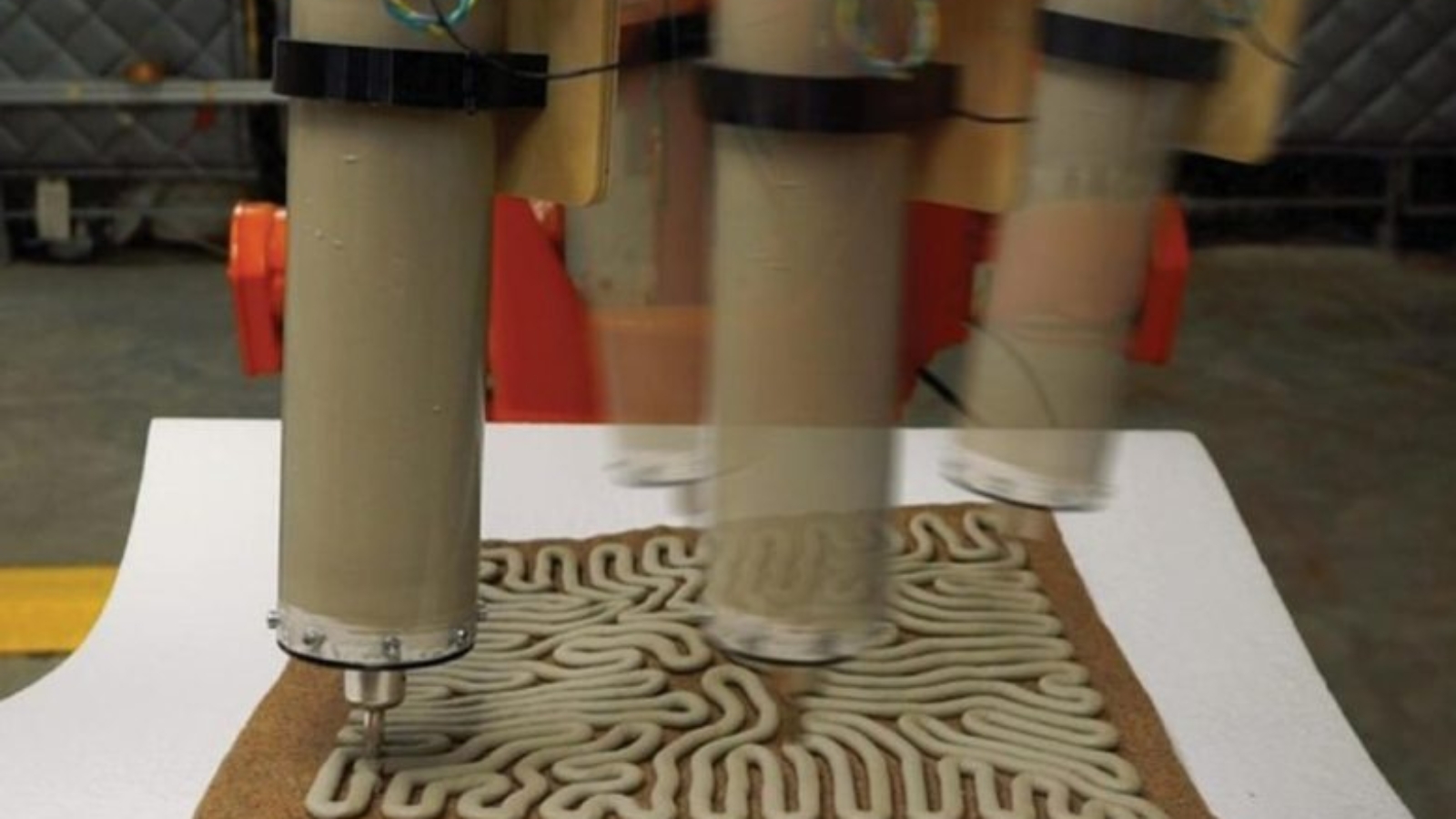According to Penn State University, a research proposal by Benay Gürsoy, assistant professor of architecture, was awarded nearly $50,000 as the 2023-24 recipient of the Stuckeman School’s Collaborative Design Research Fund, which supports collaboration in design innovation. Gürsoy seeks to overcome the challenges of 3D printing concrete structures on indefinite surfaces in an effort to reduce the environmental effects of housing construction.
Gürsoy, director of the Form and Matter (ForMat) Lab in the Stuckeman Center for Design Computing (SCDC), leads faculty and student researchers in the College of Arts and Architecture’s Stuckeman School and the College of Engineering on the work.
Although robotic arms provide precision and control in the fabrication process of concrete structures, they are limited in sensing the environment and responding to it accordingly. In her proposal, Benay Gürsoy’s ForMat Lab team – in collaboration with the Additive Construction Lab (AddConLab) and the Control and Autonomous Robotics Lab (CARL) – will scan and digitally reconstruct the robot’s work environment in small-scale robotic fabrication applications and apply it to large-scale concrete 3D printing workflows. The team will use a system developed by Özgüç Çapunaman, ForMat Lab researcher and architectural doctoral candidate, as part of his doctoral research.
Titled “A Vision-Based Sensing Framework for Adaptive Robotic Additive Manufacturing of Concrete on Indefinite Surfaces and Real-Time Monitoring of the 3D Printing Process,” the project is also integral to the architecture doctoral research of Paniz Farrokhsiar, a ForMat Lab and AddConLab member. It is an extension of her master’s thesis research that she completed in 2020 under Gürsoy’s guidance.
Manufacturing on Demand
“Concrete is one of the most widely used construction materials globally and contributes up to 8% of global carbon dioxide emissions,” said Farrokhsiar. “By 3D printing concrete, we can reduce construction time and waste, which is more sustainable than conventional practices. However, the 3D printing process brings about critical challenges that affect the structural stability and the quality of the 3D printed concrete structures.”
According to the researchers, the developed system will allow the precise digital reconstruction and registration of the work environment prior to robotic tooling operations; 3D printing concrete on indefinite surfaces; real-time monitoring of the 3D printing process; adjusting the system in real-time to fix the errors; and formwork-less 3D printing. This system feeds into AddCon Lab’s ongoing effort to develop means to automatically monitor and control the concrete printing process.
Co-principal investigators from Penn State on the project are: José Pinto Duarte, director of the SCDC and Stuckeman Chair in Design Innovation; Sven Bilén, professor of engineering design, electrical engineering, and aerospace engineering; and Donald Ebeigbe, assistant professor of electrical engineering and CARL director in the School of Electrical Engineering and Computer Science.
Shadi Nazarian, former associate research professor of architecture in the Stuckeman School who is now the H. Ralph Hawkins, FAIA, Chair in Architecture at the University of Texas at Arlington’s College of Architecture, Planning, and Public Affairs, is also a co-principal investigator.
You might also like:
Germany receives Europe’s first 3D printed social housing apartment: According to the UN Habitat, the world needs to build 96,000 new affordable homes every day to house the estimated 3 billion people who will need access to adequate housing by 2030. This challenge is driven by multiple factors including housing costs rising faster than growth in incomes. 3D printing holds the promise to address this gap by reducing construction costs while increasing speed of construction through automation.
* This article is reprinted from 3D Printing Media Network. If you are involved in infringement, please contact us to delete it.
Author: Edward Wakefield


Leave A Comment